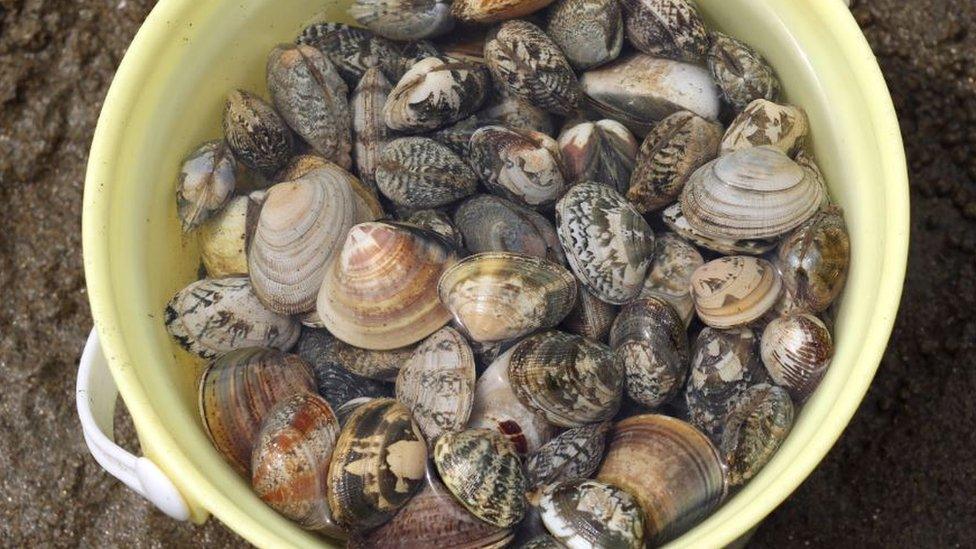Baltic Sea clams 'giving off as much gas as 20,000 cows'
- Published

Scientists have found clams and worms in the Baltic Sea are giving off as much gas as 20,000 dairy cows.
They are worried because large amounts of methane and nitrous oxides are being released from the bacteria in their guts.
The discovery of these greenhouse gases means they will need to be taken into account when tackling global warming.
A Cardiff and Stockholm universities' study found 10% of methane emissions from the Baltic Sea came from clams.
The study's co-author Dr Ernest Chi Fru, from Cardiff University's School of Earth and Ocean Sciences, said: "What is puzzling is that the Baltic Sea makes up only about 0.1% of Earth's oceans, implying that globally, apparently harmless bivalve animals at the bottom of the world's oceans may in fact be contributing ridiculous amounts of greenhouse gases to the atmosphere that is unaccounted for."
And Dr Stefano Bonaglia, from Stockholm University, added: "It sounds funny but small animals in the seafloor may act like cows in a stable, both groups being important contributors of methane due to the bacteria in their gut.
Greenhouse gases
"These small yet very abundant animals may play an important, but so far neglected role in regulating the emissions of greenhouse gases in the sea."
The findings have also led to a warning about any plans by other scientists to farm oysters, mussels and clams and releasing them into the seas.
The idea behind that move is to counter algae which is growing because of fertilisers which are washed off land by rain water into rivers and lakes.
But given the amount of gases produced, the authors have warned that the potential impacts need to be considered before deciding whether to promote shellfish farming to large areas of the ocean.